James Moffatt New Testament Studies Collection (18 vols.)
Digital Logos Edition
Overview
James Moffatt’s contribution to New Testament studies in the twentieth century was immense. His interest in the historical aspect of the New Testament and Jesus' theology guided and directed the conversations of theology during his time. The James Moffatt New Testament Studies Collection provides an important look at the development of theology and New Testament studies at the turn of the nineteenth century, as structuralism and formalism fell to the wayside and historical and textual criticism continued to rise in academic discussion.
James Moffatt also believed in the importance of effective and powerful preaching. Many of his works, especially the Literary Illustrations of the Bible series, and provide important illustrations on key Bible verses.

Key Features
- Provides valuable illustrations, quotations, and analogies for key biblical verses
- Studies the New Testament by its theology, textuality, historicity, and structure
- Includes volumes still cited by scholars and theological works today
Product Details
- Title: James Moffatt New Testament Studies Collection
- Author: James Moffatt
- Volumes: 18
- Pages: 4,250
Individual Titles
- An Introduction to the Literature of the New Testament
- The Approach to the New Testament: Lectures Delivered in London and Cambridge, April–May, 1921
- The Historical New Testament
- The Theology of the Gospels
- The Second Things of Life
- Paul and Paulinism
- Grace in the New Testament
- The Expositor’s Dictionary of Poetical Quotations
- Literary Illustrations of the Bible: The Book of Ecclesiastes
- Literary Illustrations of the Bible: The Books of Judges and Ruth
- Literary Illustrations of the Bible: The Gospel of Saint Mark
- Literary Illustrations of the Bible: The Gospel of Saint Luke
- Literary Illustrations of the Bible: The Epistle to the Romans
- Literary Illustrations of the Bible: The Book of Revelation
- Reasons and Reasons
- A Book of Biblical Devotions for Members of the Scottish Church
- Jesus on Love to God, Jesus on Love to Man
- The Thrill of Tradition
This title is included in the following collections
You can save when you purchase this product as part of a collection.
Logos 8 Pentecostal & Charisma...
$1,499.99$1,499.99Logos 8 Pentecostal & Charisma...
$2,999.99$2,999.99Logos 9 Pentecostal & Charisma...
$2,999.99$2,999.99Logos 9 Pentecostal & Charisma...
$4,749.99$4,749.99
- $21,749.99
- $24,999.99
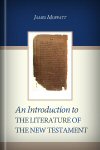
A massive and thorough introduction to New Testament studies, An Introduction to the Literature of the New Testament explores all aspects of New Testament studies on an introductory level, giving students and scholars a starting place for literary, textual, canonical, and socio-historical studies of each New Testament book. Each New Testament book begins with an enormous reading list of commentaries and studies for further reading, followed with outlines, notes on Greek textual variations, literary analysis, structural analysis, and the history of interpretation of the text.
Dr. Moffatt’s Introduction [to the Literature of the New Testament] is. . . the first of its size and importance, conceived and written in English, to treat its subject in the light of current critical opinion and to register the results of recent investigation in statements of fact and judgments of appreciation.
—Princeton Theological Review, vol. 9
A work which must for long be the only manual for English students and the basis for all their work on the subject.
—British Weekly
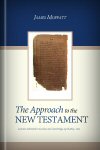
The Hibbert Lectures were a rich tradition of annual non-sectarian theological lectures in London which began in 1849 and continued until 2005. James Moffatt’s 1921 lecture series discussed the importance of New Testament socio-historical studies. Moffatt argued that the New Testament is an astounding historical work of secular importance as much as it was of religious importance. Much more than that, he argued that there is enormous value in applying a secular socio-historical approach to the New Testament.
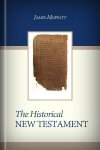
In The Historical New Testament, Moffatt arranges the New Testament according to the order of its literary growth. This chronologically focused work of historical methodology takes each section of New Testament literature and analyzes them according to chronological and historical significance.
The most important work on the credentials of Christianity that has appeared in this country for a long time. It is a work of extraordinary learning, labour, and ability.
—British Weekly
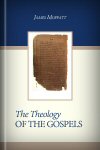
In this volume—written after a series of lectures Moffatt gave at the University of Glasgow—Moffatt takes theology in a “stricter rather than wider” study. Moffatt analyzes what is explicitly stated within the gospels, developing an almost literal theology as pronounced by the writers of the gospels. Not to be taken as a handbook on the gospels, nor a study on the teaching of Jesus, The Theology of the Gospels is a grouping of independent studies on core gospel themes.
Contents:
- Chapter I: The Gospels and Their Theology
- Chapter II: The Eschatology of the Gospels
- Chapter III: The God of Jesus
- Chapter IV: The Person of Jesus
- Chapter V: The Spirit of Jesus
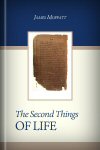
The Second Things of Life is a series of sermons, expository and illustrative in form and style, given by Moffatt to the congregation of the East Church at Broughty Ferry.
Contents:
- Chapter I: The Second Chance (2 Tim. 4:11)
- Chapter II: The Second Blow (Matt 5:39)
- Chapter III: The Second Thought (1 Sam. 16:6–7)
- Chapter IV: The Second Wave (Matt 26:47)
- Chapter V: The Second Place (Acts 1:23, 26)
- Chapter VI: The Second Watch (Luke 12:37–38)
Six delightful studies. There is evidence of as accurate knowledge of human nature as of the teaching of the Scriptures.
—Methodist Recorder
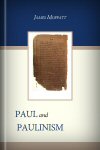
Paul and Paulinism
- Author: James Moffatt
- Publisher: Pilgrim Press
- Publication Date: 1910
- Pages: 78
Does the Old Testament anticipate a Jewish leader like Paul of Tarsus? Is Gentile Christianity synonymous with Pauline Christianity? This concise treatise analyzes Paul and Paulinism in the Old and New Testaments, providing an interesting look at Paul through history, Paul’s own words, and other New Testament and first-century evidence of him. What Moffatt finds, however, is a far more Jewish figure than early Christianity makes him out to be.
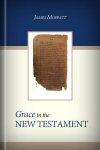
Grace in the New Testament
- Author: James Moffatt
- Publisher: Ray Long & Richard R. Smith
- Publication Date: 1932
- Pages: 419
A rare and hard-to-find volume, Grace in the New Testament is a theological study of the New Testament’s teaching on grace.
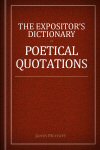
However well read a man may be in the great poets, it is impossible for him to have always at command the exact poetic quotation that will best serve him in elucidating the particular text upon which he may have chosen to discourse; and it is not likely that he will have the time, even if he should happen to have the works of the poets in his library, to pursue the necessary quest for the right passage from the right poet. At this juncture, The Expositor’s Dictionary of Poetical Quotations supplies just what is required. The editor has ranged the whole field of English poetry and beyond, to find the relevant and pertinent poetic thought for the illustration of the leading texts of Scripture.

Moffatt’s Literary Illustrations of the Bible series provides popular and pointed insights to each significant verse in the Bible. This series provides key insights into interpreting and teaching the stories and lessons of the Bible—preachers, teachers, and expositors have found illuminating literary references to the Bible’s text in Literary Illustrations of the Bible for over 100 years.

Literary Illustrations of the Bible: The Books of Judges and Ruth
- Author: James Moffatt
- Publisher: Hodder and Stoughton
- Publication Date: 1906
- Pages: 146
Moffatt’s Literary Illustrations of the Bible series provides popular and pointed insights to each significant verse in the Bible. This series provides key insights into interpreting and teaching the stories and lessons of the Bible—preachers, teachers, and expositors have found illuminating literary references to the Bible’s text in Literary Illustrations of the Bible for over 100 years.

Literary Illustrations of the Bible: The Gospel of Saint Mark
- Author: James Moffatt
- Publisher: A. C. Armstrong and Son
- Publication Date: 1905
- Pages: 104
Moffatt’s Literary Illustrations of the Bible series provides popular and pointed insights to each significant verse in the Bible. This series provides key insights into interpreting and teaching the stories and lessons of the Bible—preachers, teachers, and expositors have found illuminating literary references to the Bible’s text in Literary Illustrations of the Bible for over 100 years.

Literary Illustrations of the Bible: The Gospel of Saint Luke
- Author: James Moffatt
- Publisher: A. C. Armstrong and Son
- Publication Date: 1906
- Pages: 165
Moffatt’s Literary Illustrations of the Bible series provides popular and pointed insights to each significant verse in the Bible. This series provides key insights into interpreting and teaching the stories and lessons of the Bible—preachers, teachers, and expositors have found illuminating literary references to the Bible’s text in Literary Illustrations of the Bible for over 100 years.

Literary Illustrations of the Bible: The Epistle to the Romans
- Author: James Moffatt
- Publisher: A. C. Armstrong and Son
- Publication Date: 1905
- Pages: 131
Moffatt’s Literary Illustrations of the Bible series provides popular and pointed insights to each significant verse in the Bible. This series provides key insights into interpreting and teaching the stories and lessons of the Bible—preachers, teachers, and expositors have found illuminating literary references to the Bible’s text in Literary Illustrations of the Bible for over 100 years.
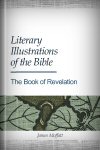
Literary Illustrations of the Bible: The Book of Revelation
- Author: James Moffatt
- Publisher: A. C. Armstrong and Son
- Publication Date: 1905
- Pages: 156
Moffatt’s Literary Illustrations of the Bible series provides popular and pointed insights to each significant verse in the Bible. This series provides key insights into interpreting and teaching the stories and lessons of the Bible—preachers, teachers, and expositors have found illuminating literary references to the Bible’s text in Literary Illustrations of the Bible for over 100 years.
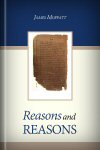
Reasons and Reasons
- Author: James Moffatt
- Publisher: Hodder and Stoughton
- Publication Date: 1911
- Pages: 199
“The candid incline to surmise of late
That the Christian faith may be false, I find; . . .
I still, to suppose it true, for my part
See reasons and reasons.”—Robert Browning, Gold Hair
Reasons and Reasons explores apologetics through the exposition of biblical stories. Twenty short expositions of twenty passages of Scripture explore the rationality of Christianity, establishing that the claims of the Bible are far from unreasonable.
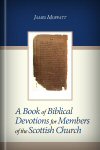
A Book of Biblical Devotions for Members of the Scottish Church
- Author: James Moffatt
- Publisher: Hodder and Stoughton
- Publication Date: 1919
- Pages: 303
The Scottish church has always been dependent on the Scripture for expression of devotional life. This devotional was prepared by Moffatt to serve the whole of Christianity using the expressions of the Scottish church. It follows the Order of Service of the Scottish church, providing a devotional right out of the psalter and the wisdom literature of the Bible.
Contents:
- The Psalter
- The Promises of God to Man
- Commands of God
- Reassurances, Reproaches, and Reproofs of God
- Promises of Man to God
- Prayers of Man
- Thanksgivings of Man
- Appeals and Encouragements of Man to Man
- Private Devotions
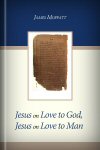
Jesus on Love to God, Jesus on Love to Man
- Author: James Moffatt
- Publisher: University of Pennsylvania Press
- Publication Date: 1922
- Pages: 33
These two lectures, delivered to the University of Pennsylvania on March 27th and 28th, 1922, provide an interesting and insightful look at how Jesus tells us to love God and how to love our fellow man. Jesus’ teachings are explained simply and clearly, leaving the reader to consider this incredible task: that Jesus calls us to love.
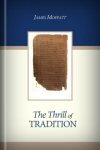
The Thrill of Tradition
- Author: James Moffatt
- Publisher: The Macmillan Company
- Publication Date: 1944
- Pages: 233
In these lectures delivered to the University of Virginia, James Moffatt artfully defines different kinds of tradition and seeks to vindicate positive tradition as “the pulse of the timeless in time.”
About James Moffatt
James Moffatt (1870–1944) was educated at Glasgow University and went on to become a professor of Greek and New Testament Exegesis at Oxford in 1911. A short while later, Moffatt accepted the position of professor of church history at the United Free Church College. Moffatt’s utmost ambition was to provide an easily readable Bible. His contributions included paraphrased translations for coherent understanding. Moffatt is the author of International Critical Commentary (ICC) A Critical and Exegetical Commentary on the Epistle to the Hebrews.
Reviews
3 ratings

Larry
5/12/2017
Some authors' work last a few years beyond the authors' lifespan. Moffatt is not one of them. His writings endure and inform today as they did two generations ago. I've always received insight from him, although I do not always agree with him. His writings have a cutting edge for the reader who wants to be challenged while being informed.David
1/15/2016
James Moffatt was an excellent scholar. Many may not agree with his somewhat liberal views, but he was A1 in his desire for the truth of a matter. He's done some excellent volumes on early Church history called The First Five Centuries of the Church, which I would love to see added to this collection. And he did one on Presbyterian Church history also which would surely interest many here.
Ian Carmichael
11/25/2013
And let me just say his meditative works are also superb - I've just worked my way through 'The Second Things of Life' - re-preached a couple in fact! And I'm currently enjoying 'The Thrill of Tradition' - logos editors - can you add that on into this collection?